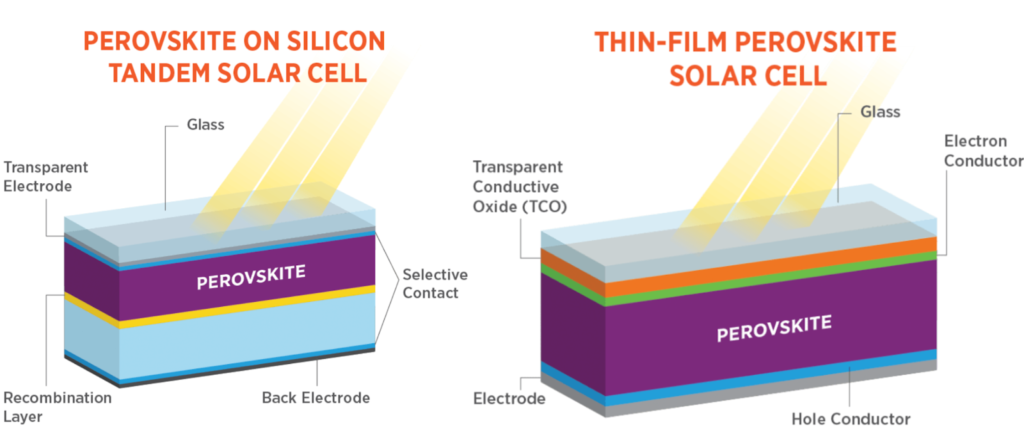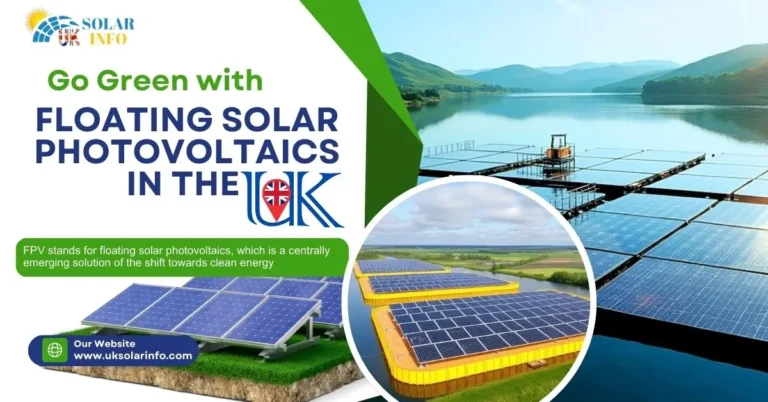Perovskite/Silicon Solar Panels: The Next Big Thing in Solar Energy!
Perovskite/silicon solar panels are the next promising step in the technology of renewable energy sources. A well-known material for using solar power is silicon based solar panels. Scientists have discovered a material called perovskite which can be Promising to create more effective solar cells, with the combination of perovskite and silicon. New perovskite/silicon solar panels will produce more energy for less cost, consistent with the progress toward increased efficiency, lowered prices, and increased sustainability in renewable energy technologies.
What Are Perovskites?
Perovskites are a member of a unique materials group that efficiently operates in the conversion task of solar radiative to electrical energy. They also remain extremely lightweight, are cheap to manufacture, and more effective at capturing sunlight than single crystalline silicon.

Why Are Perovskites So Great?
- They absorb more sunlight.
- They’re cheaper and easier to make.
- They can be made into flexible, lightweight panels
What’s Good About Silicon Solar Panels?
Silicon panels are considered as the standard PV panels due to its high resistance, durability and immense accessibility due to bulk production. Despite these advantages, silicon panels are limited in their ability to convert sunlight into electricity, utilizing only approximately 26% of photons while losing some energy in the process
Why Combine Perovskites and Silicon?
The combination of perovskites and silicon enhances solar energy absorption. Perovskites only capture the high energy light (blue and green) while silicon captures the lower energy light (red and infrared).

If a perovskite is deposited on Si, it also retains the benefits of Si. (Ovskite) and (silicon) both absorb full-sunlight energy (blue light) and full-sunlight energy (red light),respectively. Since the majority of solar radiation is converted to electricity the photovoltaic panel (PV) panel is thereby more efficient.
Better Efficiency of Perovskite/Silicon Solar Panels
Perovskite/silicon solar panel cells, if developed on a Small scale, can achieve electricity generation efficiencies exceeding 31%. This advancement represents a significant progression towards attaining the upper practical limit of 26% achievable by conventional silicon panels. Consequently, these new panel types are now able to generate more power from the equivalent amount of solar radiation.
How Are Perovskite/Silicon Solar Panels Made?
Start with Silicon: A traditional silicon solar cell is made first.
Add Perovskite: The ideal semiconductor substrate (silicon) is covered by a thin layer of perovskite.
Protect the Panel: Special coatings are applied to achieve the needed panel strength and long term stability and to get desirable durability for long term use.
The workflow is formulated as such to be manufacturable in the existing manufacturing systems without a major reform on the operational design of the factories.
Silicon Solar Cells:
Silicon based solar cells are the most dominant in the photovoltaic (PV) industry. They have High reliability, the ability to create long-lasting solar cells Long-term efficiency, one of the highest conversion rates of up to ~ 26% for single-junction silicon cells and Large-scale manufacturing capabilities

however, silicon cell has issues, especially in terms of efficiency
The Concept of Tandem Solar Cells
Tandem solar cells combine several materials with different light absorption characteristics. Perovskite/silicon solar panel tandem cells tackle the problem of single-junction cells by having a broader absorption window for sunlight.

How It Works:
- The perovskite layer absorbs higher-energy blue and green light.
- The silicon layer captures lower-energy red and infrared light.
This Combined layered structure leads to lower rates of energy loss and, therefore, greater total efficiency.
Challenges to Overcome
Yet, despite the attractiveness of Perovskite/Silicon Solar panels, there are still a few aspects to work on i:e
Perovskite/Silicon Solar panels Need to Last Longer as silicon based PV. However, A major weakness of ferroelectrics is that they can deteriorate under solar, thermal or moisture influence. Scientists have been trying to deposit protective films that can withstand extreme operating conditions. Lab-made panels are small but on an industrial scale production of the large panels used for home applications or photovoltaic devices is a challenge. There is ongoing development of new printing technologies in an effort to produce large panels affordably and rapidly.
Environmental Issues:
Some perovskites include lead, which is a toxic content requiring proper handling to avoid any contact with the user. Scientists are trying to develop new forms of materials that do not contain lead.
Cost Benefits
Due to the very limited amount of material that is made and consumed, such hybrid panels could actually be cheaper than the ones commercially sold solar panels. Additionally, because of greater cost efficiencies, they further offer energy savings and hence a lower cost of money in future.
The Future of Solar Energy
Despite the fact that perovskite/silicon solar panel cells are still in the early stage of research and development, they have the potential to revolutionize solar power generation. Experts predict that by the time they will offer a cleaner, cheaper and commercially feasible alternative energy choice for humankind.
Conclusion
Perovskite/silicon solar panels are an exciting step forward. When we pair the best of the best materials we stand to maximize exposure to solar radiation, minimize costs, and thus enable renewable energy to play a larger role in our lives. Meanwhile, with regard to solar energy, this technology keeps on improving and can offer a significant role in the strategy to fight against climate change.







One Comment